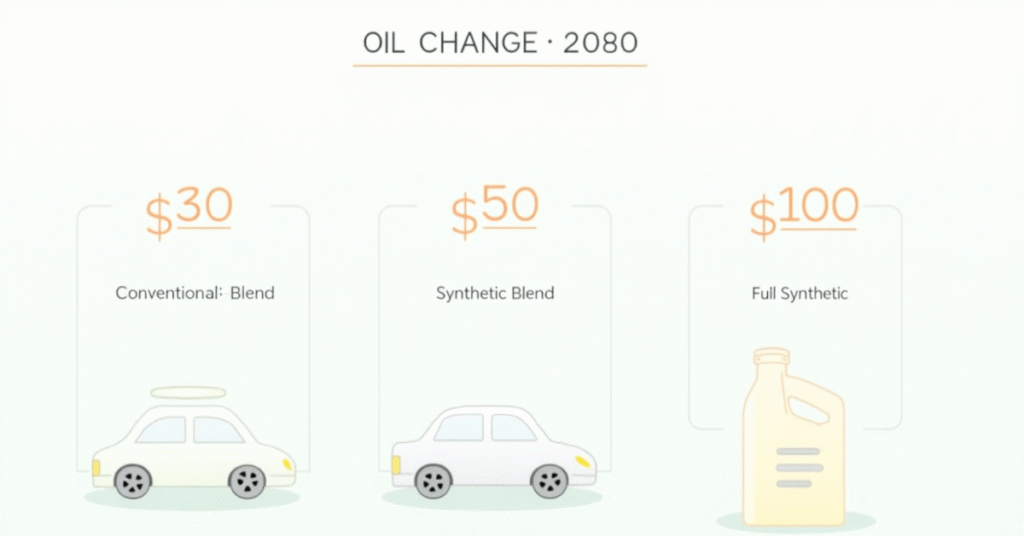Introduction
Picture this: you’re driving smoothly down the road, your engine humming perfectly—until one day, it’s not. A strange knocking sound, a blinking oil light, and suddenly you’re facing a costly repair.
Many drivers underestimate the power of a simple oil change. But how often should you change your oil to keep your car in top shape? In this guide, we break it all down so you can protect your engine, save money, and avoid surprises.
Why Are Oil Changes So Important?Oil is the lifeblood of your car’s engine.
Here’s why regular oil changes matter:
- Lubricates engine parts: Reduces friction between moving components.
- Prevents wear and tear: Protects against metal-on-metal contact.
- Keeps the engine clean: Carries away dirt, debris, and sludge.
- Improves fuel efficiency: Reduces strain on the engine, saving you money at the pump.
- Extends engine life: Regular maintenance keeps costly repairs at bay.
How Often Should You Change Your Oil? General Guidelines

Traditional Oil vs. Synthetic Oil
- Traditional oil: Change every 3,000–5,000 miles (4,800–8,000 km).
- Synthetic oil: Lasts 7,500–10,000 miles (12,000–16,000 km), sometimes longer with premium brands.
By Time, Not Just Mileage
Even if you don’t drive much, oil degrades over time. Change it every 6–12 months, even if you’re under the mileage limit.
Driving Conditions Matter
If you often drive in extreme conditions, you may need more frequent changes:
- Frequent short trips
- Extreme heat or cold
- Heavy towing or load carrying
- Stop-and-go traffic

How to Check If It’s Time for an Oil Change
- Check the dipstick: Look for dark, dirty oil or low levels.
- Dashboard warning lights: Many cars have oil change indicators.
- Listen to your engine: Knocking sounds or rough idling can signal old oil.
- Check the manual: Follow your manufacturer’s specific recommendations.
How Much Does an Oil Change Cost?
| Type of Oil | Estimated Cost (USD) |
|---|---|
| Conventional Oil | $30–$50 |
| Synthetic Blend | $50–$75 |
| Full Synthetic | $75–$120 |
Tip: Bundling oil changes with other services (like tire rotations) can sometimes save you money.
DIY vs. Professional Oil Change
DIY Pros and Cons
- Pros: Save money, work at your own pace.
- Cons: Messy, requires tools, you’re responsible for disposal.
Professional Service Pros and Cons
- Pros: Quick, expert handling, includes inspection.
- Cons: More expensive, requires appointment.
How to Extend Time Between Oil Changes
- Use high-quality synthetic oil.
- Stick to manufacturer-recommended intervals.
- Practice gentle driving habits (avoid rapid acceleration, heavy braking).
- Check for oil leaks regularly.
FAQ
How often should you change your oil?
Every 3,000–5,000 miles for traditional oil, 7,500–10,000 miles for synthetic, or every 6–12 months.
Is synthetic oil better than regular oil?
Yes—synthetic offers better performance, lasts longer, and keeps the engine cleaner.
What happens if I skip an oil change?
You risk sludge buildup, poor engine performance, and costly damage.
Can I switch between oil types?
Yes, but check your manual and flush the system if switching from conventional to synthetic.
Conclusion – Protect Your Car, Protect Your Wallet
Regular oil changes are one of the easiest ways to safeguard your car’s health and avoid expensive repairs. By following the right schedule, you ensure your car stays reliable, efficient, and ready for the road.
you may also like :
- 2019 Toyota Corolla: Reliable & Affordable – Expert Review & Guide
- Toyota Tacoma For Sale – Best Deals, Prices & Buyer Tips
- Used Toyota Camry – 5 Best Deals, Prices & Buyer Tips
- Nissan 200SX Legacy 2025: Affordable, Sporty, and Still Iconic
- Bugatti Price Breakdown 2025: How Much Does a Bugatti Cost ?


